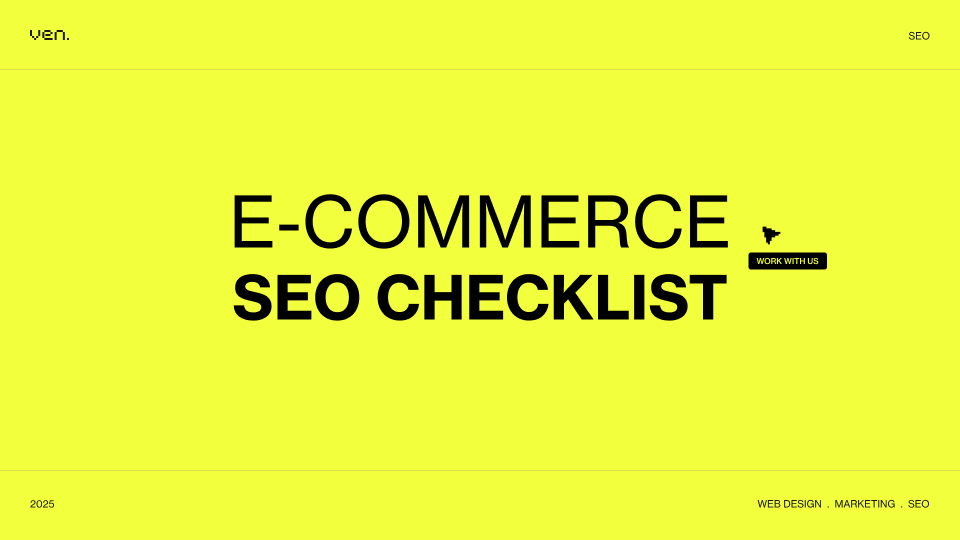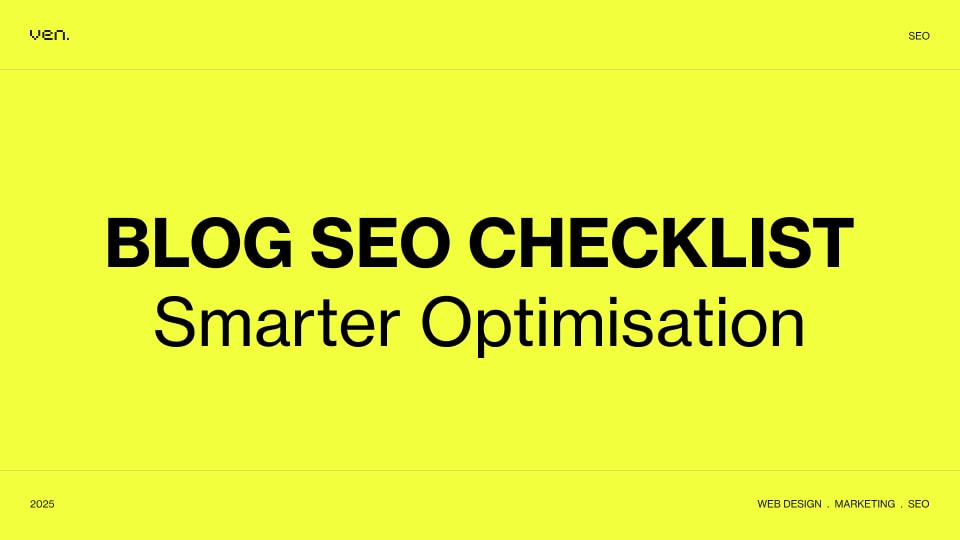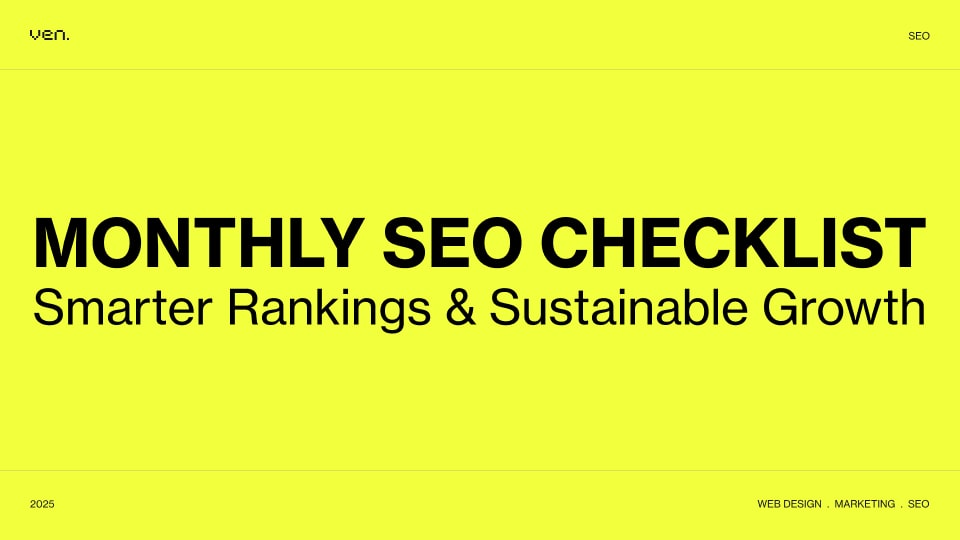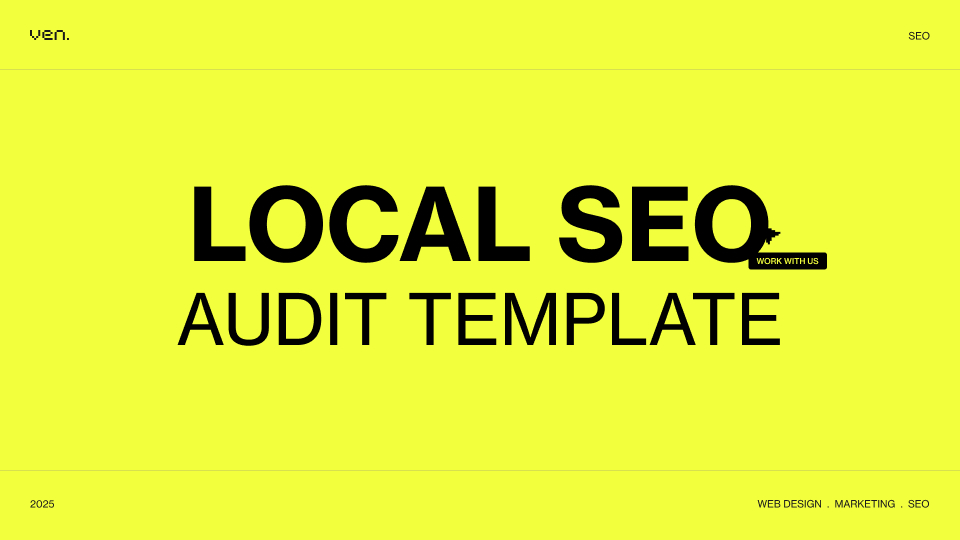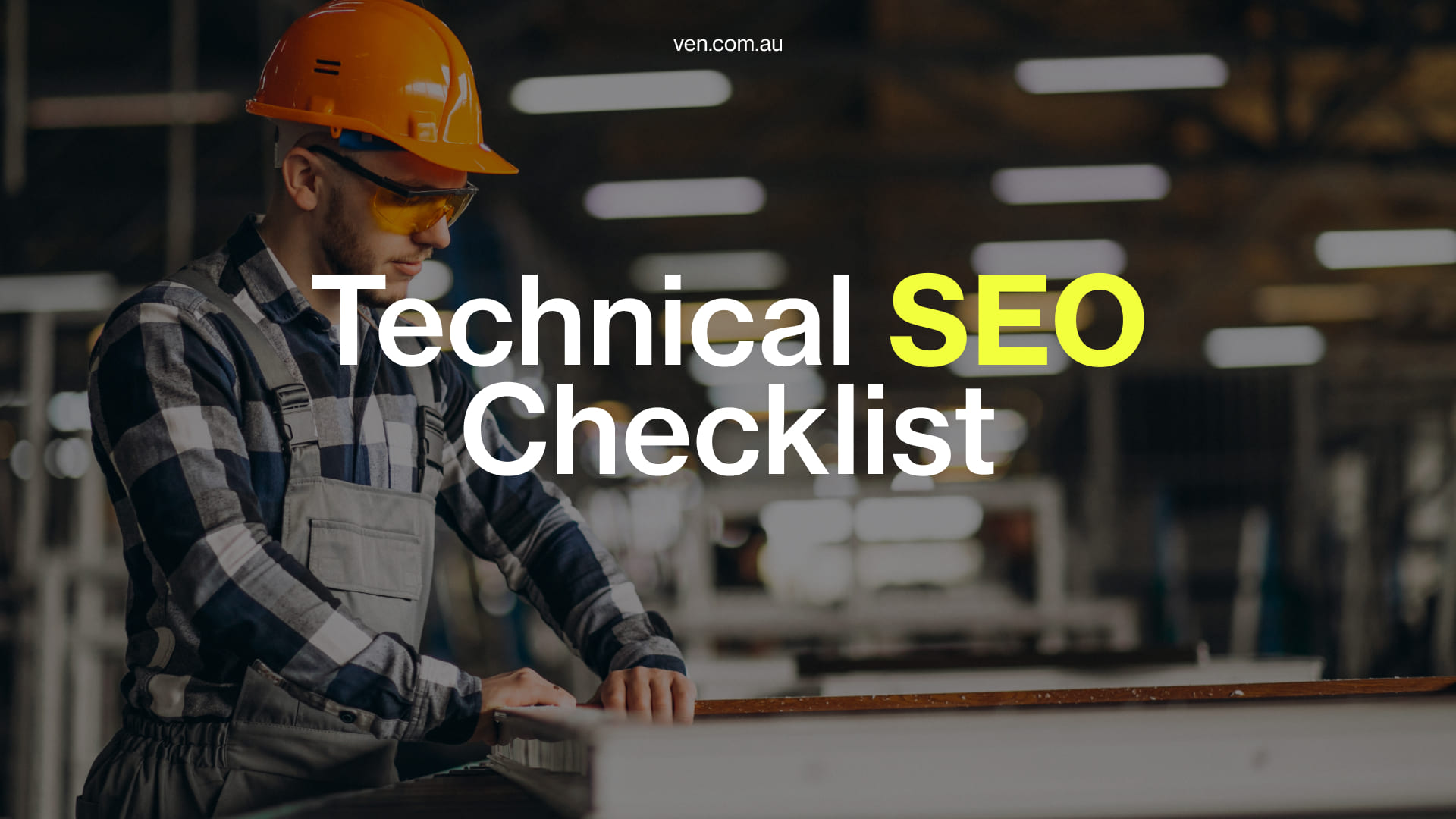Your e-commerce store deserves more than just good design; it needs to be found. With this e-commerce SEO Checklist, you’ll learn the essential steps to boost visibility, attract more traffic, and convert visitors into buyers. Aligned with the latest best practices and tailored for Australian businesses, this guide helps you take control of your digital growth.
More than half of Australian shoppers begin their buying journey on Google. A February 2023 survey confirmed that search engines—not social media or direct visits—are the first stop for most online product research. If your eCommerce site isn’t showing up in those early search results, you’re missing out on crucial traffic. This checklist is your strategic guide to boosting visibility, attracting the right clicks, and turning browsers into buyers. Here’s how.
#1. E-commerce SEO Basic Checklist: Get Search-Ready from Day One
A fast, secure, and well-structured site supports every other part of your SEO strategy. From mobile responsiveness to site architecture, technical SEO ensures your store runs smoothly and is easy for search engines to understand.
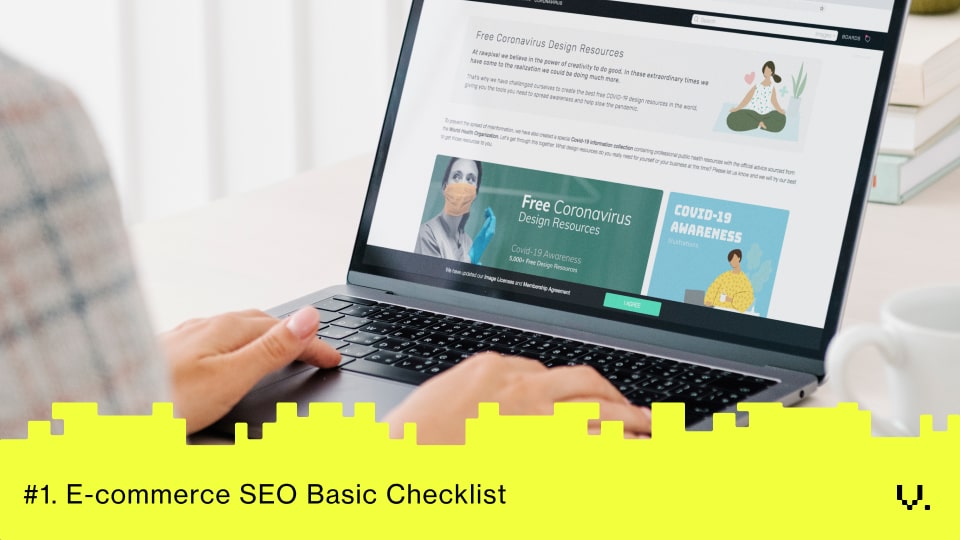
#1.1. Technical SEO Basics Checklist: Get Found Where It Matters
Having a well-designed store is just the start. To succeed online, your site needs to be visible in search results. This checklist outlines the essential SEO actions to ensure your store is indexed, discoverable, and competitive in a search landscape increasingly shaped by AI.
1. Set Up Google Search Console
Google Search Console is your starting point for understanding how your site performs in search. It helps track traffic, identify indexing issues, and improve visibility. As AI starts influencing how Google surfaces answers, having accurate site data is more important than ever.
2. Add Bing Webmaster Tools
Bing is still used by millions of people worldwide. With Microsoft’s integration of AI into Bing search, this platform is becoming more valuable. Adding your site ensures you’re not missing out on emerging search opportunities.
3. Submit Your Sitemap
Search engines need to understand your site’s structure. A sitemap does that clearly. Platforms like Shopify and WordPress generate one for you. Submitting it helps both traditional and AI-enhanced search engines index your content efficiently.
4. Set Up Google Analytics
Analytics helps you see how people interact with your site. Whether you’re targeting Australian shoppers in Melbourne or international visitors, data from Google Analytics can show you where to improve and what’s working well.
5. Check if Your Site is Indexed
Use a search like site:yourdomain.com in Google. If you see no results, your site isn’t indexed yet. Without indexing, your content won’t appear in search results or be referenced in AI-generated summaries.
6. Use Smart SEO Tools
Tools like Semrush, Moz, and Ahrefs help monitor your rankings, track competitors, and optimise for new keywords. Free tools like MozBar or Google Keyword Planner are useful for identifying search trends, including those specific to Australia such as local product terminology.
VEN Pro Tip
Set calendar reminders to review your E-commerce SEO Checklist setup quarterly. Search algorithms evolve fast, especially with AI reshaping how results are ranked and displayed. Regular check-ins help you catch indexing issues early, update your sitemap after major site changes, and spot new keyword opportunities in tools like Semrush or Google Search Console. Think of it as routine maintenance for your digital visibility.
#1.2. Site-Wide eCommerce Checklist: Build a Store That Converts
SEO works best when it’s built on a strong, user-focused foundation. This checklist ensures your site creates a seamless, trustworthy experience for every shopper.
7. Use Consistent Branding
Make sure your logo, colours, and brand messaging are aligned across every page. If you’re serving customers in Australia, using familiar language and spelling builds an extra layer of connection.
8. Promote Social Media and Newsletter Sign-Ups
Make it easy for users to stay in touch. Add clear sign-up options and social links in your header or footer. Offering perks like free shipping within Australia can be a strong incentive to join your list.
9. Keep Navigation Simple and Clear
Visitors should be able to access product pages, FAQs, and delivery details without hunting for them. For Australian users, include information like shipping times by state or payment options that reflect local preferences.
10. Prioritise Security and Trust
Show visitors their data is safe. Use SSL certificates, display trust badges, and if you’re an Australian business, list your ABN to add credibility.
11. Optimise for Mobile Shopping
More users are shopping on mobile than ever. Make sure your site is responsive and loads quickly, especially in areas with slower internet like regional Queensland or Tasmania.
12. Focus on Site Speed
Speed influences both rankings and user experience. Test your site regularly, compress images, and streamline your code to make sure your store loads fast for every visitor.
13. Tell a Genuine Brand Story
With AI generating more generic content, authenticity stands out. Use your About page to share real details about your business. For example, highlight that you’re proudly based in Australia or that your products are locally sourced.
VEN Pro Tip
Run a full E-Commerce SEO – user experience audit checklist every 6 months. Walk through your store on desktop and mobile as if you’re a first-time visitor. Look for points of friction, outdated content, or missed trust signals. If you serve Australian customers, test from different cities using VPNs to spot region-specific issues like load speed or local payment options. A few small tweaks can turn hesitation into conversion.
#2: E-commerce SEO Checklist: Research the Right Keywords
Great SEO starts with understanding how your audience searches. Keyword research is not just a task, it’s a strategic foundation for visibility, engagement, and sales.
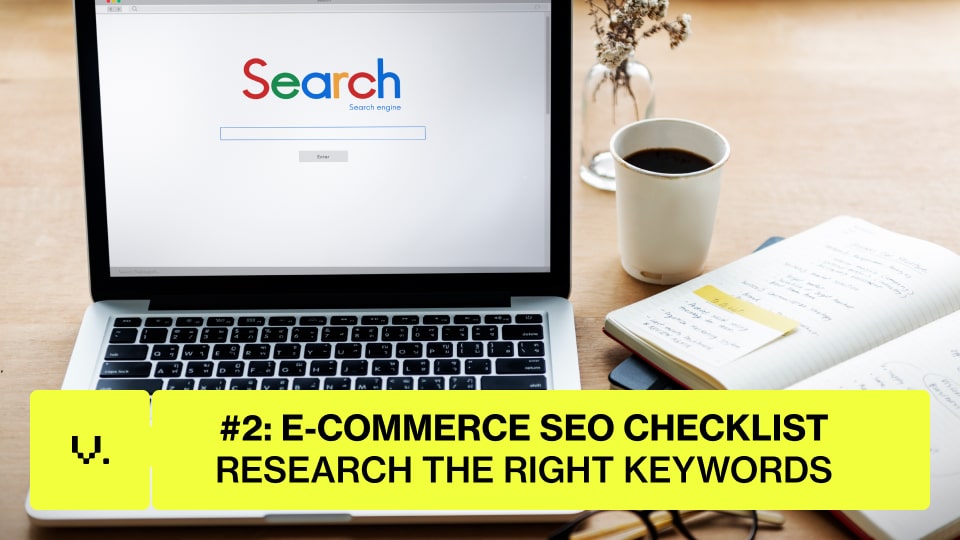
#2.1. Build Your Keyword Foundation
Every effective e-commerce SEO checklist begins with strong keyword research. Before you optimise content or attract qualified traffic, you need to know exactly what your audience is searching for. This section helps you lay the groundwork by identifying the right seed and long-tail keywords to shape your strategy and set your store up for long-term visibility.
14. Start with Seed Keywords
Begin by identifying seed keywords that reflect your core offerings. These short, general terms form the base of your research. For example, if you sell skincare, a seed keyword might be “face serum.” From there, use tools like Ahrefs, Semrush, Moz, or even free options like Google Keyword Planner to generate expanded keyword ideas.
15. Explore Long-Tail Opportunities
Long-tail keywords are more specific phrases that often have lower competition and higher intent. Someone searching “best vegan protein powder for women Australia” is far more likely to convert than someone searching just “protein powder.” These keywords align with real, purchase-ready needs and are especially valuable for newer sites that don’t yet have strong domain authority.
16. Understand Search Volume and Difficulty
Search volume shows how often a keyword is used each month. Keyword difficulty indicates how challenging it is to rank for that term. Strike a balance between the two. High-volume keywords can bring traffic, but lower-volume, lower-difficulty keywords are often your best shot at appearing on page one—especially for smaller or emerging brands.
17. Align with Commercial Viability
Every keyword you target should align with what you actually sell. Ranking for “candle holders” makes little sense if you only sell candle-making kits. Stay focused on relevance to maximise ROI from organic traffic.
VEN Pro Tip
Use seed and long-tail keywords to guide your content pillars. Plan categories, product page headers, and FAQ sections around these core terms. This helps both users and search engines understand what your site is about and increases your chances of ranking organically.
#2.2. Strategically Refine Your Target List
Once your core keywords are in place, it’s time to sharpen your focus. This phase is about aligning your strategy with real search intent, filtering for impact, and using competitor insights to outpace the market. It’s where smart targeting meets meaningful action.
18. Factor in Local Intent
If you’re targeting specific markets like Australia, include geographic modifiers such as “Melbourne,” “Sydney,” or “near me.” Tools like Ubersuggest and Google Trends can show local variations in search terms, helping you create location-specific content that meets real user demand.
19. Map Keywords to Search Intent
Not all searches mean the same thing. Break down your list by intent:
- Informational: “how to choose the right running shoes”
- Navigational: “Nike store Brisbane”
- Transactional: “buy women’s sneakers online Australia”
Understanding what the user wants allows you to match keywords to the right content type, blog posts for informational queries, product pages for transactional ones.
20. Research Your Competitors
Input competitor URLs into tools like Semrush or Moz to see what they rank for. This can reveal content gaps, keyword opportunities, and areas where you can outrank them with more focused or localised content.
21. Filter and Finalise Your Keyword List
Not every keyword is worth targeting. Filter based on:
- Volume (local and global)
- Relevance to your offerings
- Competition level
- Alignment with user intent
Avoid vague or misleading terms. Focus on those that will drive qualified traffic and support real user needs.
VEN Pro Tip
Start with 20 to 30 target keywords per product category. Use these to guide your site navigation, optimise product pages, and fuel your blog strategy. This structure ensures your content speaks the language of your buyers and supports both global discovery and local intent.
Review and update your keyword list every quarter. Search trends shift fast, and staying aligned with how your audience searches, especially in evolving local markets like Australia, keeps your strategy sharp and effective.
#3: E-commerce On-page SEO Checklist: Fuel Your Store’s Visibility
Search engines reward what users love: clear content, smart structure, and a seamless shopping experience. That’s why no e-commerce SEO checklist is complete without a focus on on-page optimisation and strategic content creation.
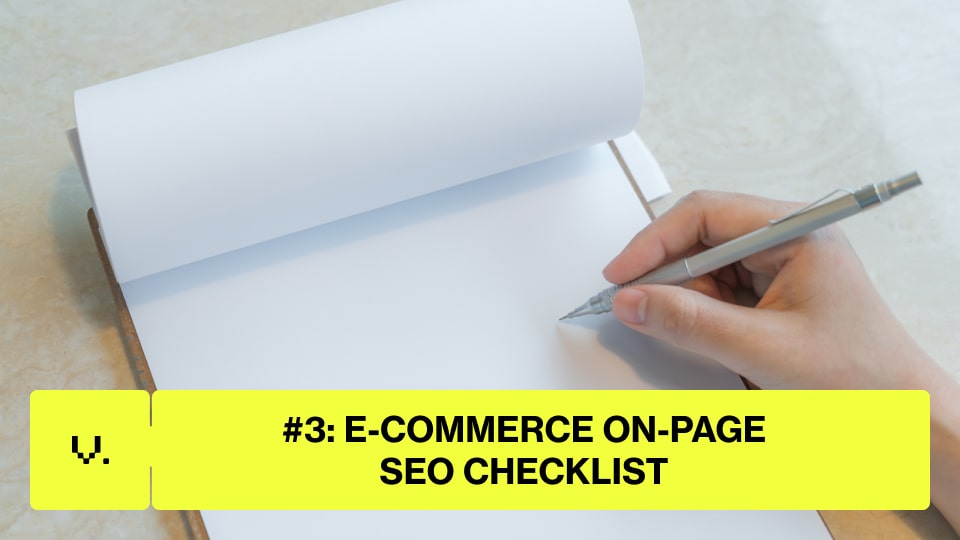
From product pages to internal linking, every element of your site plays a role in how it ranks and converts. This section helps you refine your content, connect your pages, and create a site that performs, both for users and search engines.
#3.1. Create Content That Connects and Converts
Content is not a nice-to-have—it’s a business growth tool. From product pages to blog posts, every piece of content should serve a purpose: to inform, inspire, or convert. This part of your e-commerce SEO checklist ensures your content works harder across the entire customer journey.
22. Unique Product Descriptions
Generic product copy won’t help you stand out. Craft descriptions in your brand voice, highlighting materials, benefits, sizing tips, and real-life use cases. Add relevant keywords naturally and aim to answer the questions your customers actually have.
23. Educational Blog Posts
Your blog can drive long-term organic traffic when built around audience intent. Cover how-tos, product use cases, or industry trends, and link to related products where it makes sense. It’s not just content—it’s content that leads to clicks.
24. Video and Rich Media
Show, don’t just tell. Use short product videos, tutorials, or 360-degree views to increase engagement and time on page. Rich media supports SEO and adds visual credibility.
25. User Reviews and Social Proof
Encourage customer reviews and showcase them clearly. Use structured data to qualify for search-rich snippets and give buyers the reassurance they need.
VEN Pro Tip
Before publishing any content, ask: What action should this inspire? Then optimise everything, from visuals to CTAs, toward that goal. Clarity drives conversions.
#3.2. Master Internal Linking and Navigation
A seamless structure is just as important as standout content. Internal linking is the backbone of both user experience and site SEO. It connects your content, distributes authority, and helps users (and crawlers) navigate your store with ease.
26. Optimise Your Menu
Design a menu that’s simple, intuitive, and keyword-optimised. Use descriptive labels like “Men’s Running Shoes” instead of just “Shoes” to help users and search engines understand your structure. A clean layout improves engagement and supports discoverability.
27. Breadcrumb Navigation
Breadcrumbs guide users and improve crawlability. They give both shoppers and search engines a clear sense of your site’s hierarchy. For example, “Home > Skincare > Serums > Vitamin C Serum” adds clarity and context.
28. Related Products and Links
Feature similar or complementary items, “customers also bought” suggestions, or recommended reads. These create deeper journeys, improve dwell time, and increase conversion opportunities.
VEN Pro Tip
Think like your user. If someone lands on a product page, what would they want next? A comparison guide? A related product? A sizing chart? Use links to anticipate and serve those needs.
Audit your internal linking quarterly. Fix broken links, add new ones to fresh content, and ensure every key page is just a few clicks away. Your goal: a connected, crawlable site that guides visitors naturally.
#3.3. Optimise Every Page On-Site
Every page of your eCommerce store is a ranking opportunity. On-page optimisation makes sure your content is discoverable, relevant, and aligned with user search intent. This section of your e-commerce SEO checklist covers how to strengthen your product and category pages for search visibility.
29. Product Page Optimisation
Use clear, keyword-rich titles and unique descriptions. Add alt tags to images, compress for speed, and make sure each page includes conversion-friendly elements like trust badges, size guides, and shipping info.
30. Category Page Optimisation
Think of category pages as your digital store aisles. Use keyword-targeted titles, meta descriptions, and a short intro that helps customers and search engines understand what’s inside. Add filters, FAQs, and rich content to improve relevance and ranking.
31. Title Tags & Meta Descriptions
Your title tag should include a primary keyword, but more importantly, it must reflect user intent and promise value. Meta descriptions act as your ad copy in search results—concise, compelling, and keyword-informed.
- Keep titles under 60 characters and include a value-driven hook
- Write unique meta descriptions for every page (140–155 characters)
- Include a clear call to action: “Shop now”, “Explore the collection”, etc.
32. Heading Structure
Break your content into sections with H1 to H4 tags. This improves readability for users and crawlability for bots. Use headings to highlight key benefits or themes.
33. Image Optimisation
Rename image files descriptively and use alt text that supports both accessibility and SEO. Avoid stuffing keywords, but make every word count.
- Compress images for fast loading
- Use WebP format where supported
- Describe what the image shows and why it matters
34. Clean URLs
A good URL should be short, readable, and informative. For example, www.yourstore.com/womens-sneakers is better than www.yourstore.com/product1234.
Also:
- Avoid special characters or unnecessary numbers
- Keep it consistent across your site
VEN Insight:
Think of each product or category page like a mini landing page. It should have a clear headline, scannable features, and strong calls to action. SEO isn’t separate from UX—it’s part of it.
#3.4. Avoid Duplicate Content and Stay Clean
Search engines reward originality and structure. Duplicate content confuses crawlers and dilutes your SEO value. Make sure each page is unique and properly tagged to protect your rankings.
37. Eliminate Duplicates
Avoid copy-pasting from suppliers or using identical descriptions across products. Write for your audience in a consistent brand voice.
38. Clean URLs and Redirects
Use descriptive, readable URLs. Implement 301 redirects when retiring pages to preserve authority. Use canonical tags to signal which version of a page is primary, especially in cases of similar content or pagination.
39. Use Pagination Tags Correctly
If your site has multiple pages of products or blog posts, implement rel=”prev” and rel=”next” tags to show page relationships. This helps Google understand structure and reduces content overlap.
VEN Pro Tip
Set up regular site audits using tools like Screaming Frog or Ahrefs. These scans can catch hidden duplication, broken links, or crawl issues before they affect your performance.
#4: E-commerce Off-page SEO Checklist: Build Authority Beyond Your Store
Off-page SEO is essential for enhancing your e-commerce site’s visibility and authority beyond its pages. By implementing strategic off-page tactics, you can build trust with search engines and attract more qualified traffic. Here’s how to strengthen your e-commerce SEO checklist with effective off-page strategies:
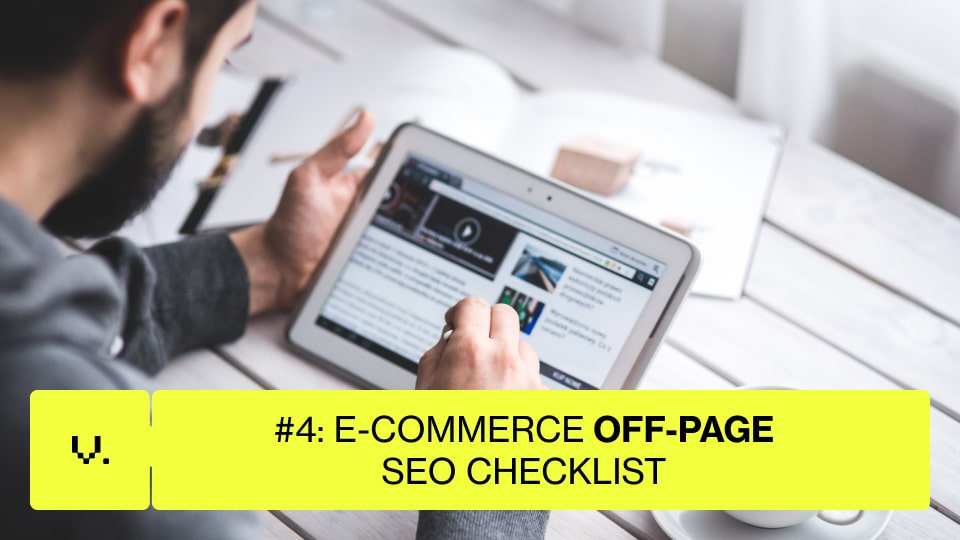
#4.1. Build High-Quality Backlinks
Backlinks from reputable websites signal to search engines that your content is trustworthy and valuable. Focus on acquiring links from authoritative sources within your niche to boost your site’s credibility and search rankings.
40. Guest Posting
Write for reputable blogs in your niche to build authority and earn backlinks. Use tools like Ahrefs to find high-authority sites, and search using terms like “your industry + write for us.” Pitch valuable topics that align with their audience and include a natural backlink within the article.
41. Broken Link Building
Use tools like Check My Links or Ahrefs to find broken links on relevant resource pages. Reach out to site owners and suggest your content as a replacement. Focus on content that closely matches the original topic to increase your success rate.
42. Influencer Outreach
Partner with influencers who speak to your ideal customer. Offer product samples or collaboration ideas in exchange for a review or mention with a backlink. Micro-influencers with high engagement often deliver better results than broad-reach accounts.
43. Content Promotion
Create shareable assets like guides, infographics, or research pieces that others want to reference. Promote them through niche communities, newsletters, and targeted outreach. Tools like BuzzSumo can help you identify high-performing topics to improve upon.
VEN Pro Tip
Prioritise quality over quantity. A few backlinks from high-authority sites can have a more significant impact than numerous links from low-quality sources.
#4.2. Enhance Social Media Engagement
Active participation on social media platforms can amplify your content’s reach and drive traffic to your site. While social signals don’t directly influence rankings, they can lead to increased visibility and backlink opportunities.
As algorithms evolve, including those influenced by AI, consistent and relevant activity on your social channels helps keep your brand in front of the right audiences.
44. Optimize Profiles
Complete every section of your profiles—from bio to website links. Use clear, keyword-aligned descriptions that reflect your brand and offerings. A well-optimised profile makes it easier for users and search engines to understand what you do.
45. Share Valuable Content
Post regularly with content your audience finds useful or inspiring. Product highlights, how-tos, and behind-the-scenes content tend to perform well. Planning ahead with a content calendar keeps your strategy consistent.
46. Engage with Followers
Respond to comments and messages genuinely. Engaging directly builds relationships and increases the chances your content will be shared or saved—both strong indicators for platform algorithms.
47. Leverage Hashtags
Use relevant, specific hashtags to improve post visibility. A mix of branded and trending tags helps your content reach new audiences and appear in interest-based searches.
VEN Pro Tip
Consistency is key. Maintain a regular posting schedule to keep your audience engaged and your brand top-of-mind.
#4.3. Utilize Online Directories and Citations
Listing your business in reputable directories helps improve visibility, build trust, and earn high-quality backlinks. These citations also support local SEO by reinforcing your presence across the web. As AI plays a growing role in powering local search and discovery, maintaining consistent, accurate listings is more important than ever.
48. Google Business Profile
Create and optimise your Google Business Profile to appear in Maps and local search results. Include accurate details like your address, phone number, website, and business hours.
49. Industry-Specific Directories
List your business on trusted directories relevant to your niche. These links help establish authority and bring in qualified traffic.
50. Local Listings
If you serve specific regions or have a physical location, add your business to local directories. Focus on accuracy—especially for your name, address, and phone number (NAP)—to strengthen local signals.
VEN Pro Tip
Use AI-powered tools like BrightLocal or Moz Local to scan and manage your listings across the web. These platforms help you quickly find inconsistencies and keep your information up to date.
#4.4. Foster Influencer and Community Relationships
Strong relationships drive long-term SEO value. Collaborating with influencers and engaging in active online communities helps expand your reach, earn backlinks, and strengthen brand credibility. These interactions also feed into AI-powered algorithms that increasingly reward authority and relevance across platforms.
51. Influencer Collaborations
Work with influencers who align with your audience for product reviews, co-branded content, or giveaways. Choose creators with genuine engagement over just high follower counts.
52. Forum Participation
Join niche forums or industry discussion boards. Offer helpful insights, contribute thoughtfully, and link to your content only when it truly adds value.
53. Q&A Platforms
Answer questions on platforms like Quora or Reddit. Providing useful responses positions your brand as an expert while driving targeted traffic to your site.
VEN Pro Tip
Prioritise relationships, not just exposure. The most valuable mentions come from those who trust your brand and believe in your product. Focus on partnerships that offer mutual value.
#5: E-commerce Technical SEO Checklist: Build a Solid Technical Foundation with Ongoing Optimisation

Strong technical SEO is the bedrock of a high-performing e-commerce site. It ensures your store is fast, secure, structured, and easily understood by search engines, especially in an evolving AI-powered landscape. The following technical actions will help improve visibility, crawlability, and overall site health.
#5.1. Technical SEO Fundamentals: Speed, Structure, and Security
These foundational elements ensure your e-commerce store runs smoothly, loads quickly, and is trusted by both users and search engines.
54. Mobile-First Design
A responsive site is essential. Use mobile-optimised themes and design for usability on smaller screens. Simplify navigation, avoid large text blocks, and place key CTAs above the fold.
56. Speed Optimisation and Core Web Vitals
Optimise load times by compressing images, reducing HTTP requests, minifying code, and using a CDN. Monitor Core Web Vitals using PageSpeed Insights and Search Console.
57. SSL & HTTPS
Secure your site with an SSL certificate to protect user data and meet Google’s expectations. Ensure HTTPS is used across all URLs to prevent mixed content errors.
58. Clean Code and Render Efficiency
Minimise render-blocking resources and remove unnecessary scripts or plugins. Combine CSS files and use async loading for JavaScript.
VEN Pro Tip
Run performance audits monthly with tools like GTmetrix or Lighthouse. Even small delays can impact conversion rates significantly.
#5.2. Technical SEO for Crawlability, Indexing, and Rich Results
These optimisations ensure your content is easy to discover, understand, and display in enriched search formats.
59. Structured Data (Schema Markup)
Use structured data for products, reviews, and breadcrumbs to enable rich snippets. Generate markup with Schema.org and validate it using Google’s Rich Results Test.
60. Smart Site Architecture
Organise content with clear navigation paths and logical page depth. Use breadcrumb trails and group products in categories to support both SEO and UX.
61. Robots.txt and Sitemap
Guide crawlers using a clean robots.txt file and regularly updated XML sitemap. Submit to Google Search Console and test for errors using built-in tools.
62. Hreflang Implementation
If you serve multiple regions or languages, add hreflang tags to show the right content to the right users and prevent duplicate indexing.
63. Ongoing Monitoring and Audits
Schedule regular checks with Screaming Frog, Search Console, and technical SEO tools. Track crawl errors, mobile usability, and structured data health.
VEN Pro Tip: Keep a changelog of technical updates. This makes it easier to trace performance shifts and fix SEO drops faster.
#5.3. Optimise, Analyse, Repeat
SEO is never “done.” The digital landscape evolves, and so should your strategy. Keep learning, testing, and refining.
64. Monitor KPIs
Use Google Analytics and Google Search Console to track:
- Organic traffic growth
- Bounce rates
- Click-through rates (CTR)
- Conversion rates
Review performance by device, location, and source to uncover opportunities.
65. Conduct SEO Audits
Quarterly SEO audits can catch broken links, outdated content, or technical issues before they impact rankings. Use tools like SEMrush or Ahrefs for deep dives.
66. A/B Testing
Optimise landing pages, product images, CTAs, and copy through split testing. Small changes can lead to significant gains over time.
67. Stay Updated
Subscribe to SEO news from sources like Moz, Search Engine Journal, and Google’s own blogs. Algorithm updates can shift the playing field overnight.
SEO Is a Continuous Advantage, Not a One-Time Task
Whether you’re launching a new online store or scaling an established brand, mastering e-commerce SEO is one of the most effective ways to drive sustainable growth. This E-commerce SEO checklist has given you the core elements, from foundational setup to advanced technical fixes, that help your store get found, trusted, and chosen.
As AI-driven search evolves and consumer behaviour shifts, the most successful online stores are the ones that treat SEO as an ongoing process. Revisit these steps regularly. Audit. Optimise. Adapt. The payoff isn’t just more traffic, it’s better traffic, stronger engagement, and higher lifetime customer value.
Ready to grow your store’s visibility? Bookmark this checklist. Share it with your team. And take action, one section at a time. Because when it comes to e-commerce success in Australia, and beyond, every click starts with being found.
